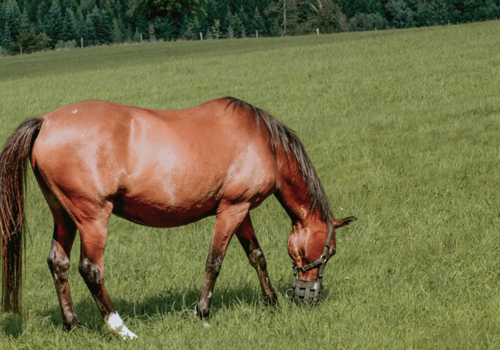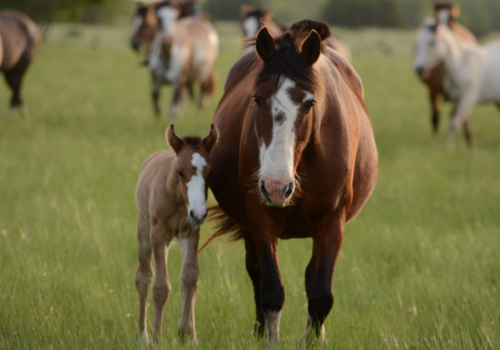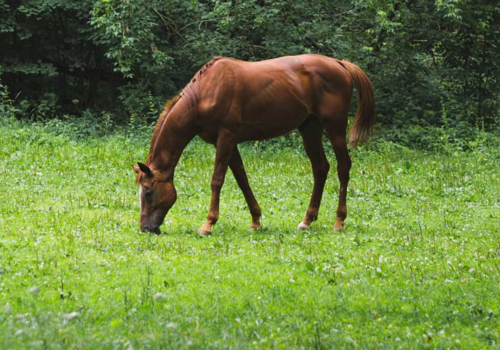A well-maintained pasture is able to provide your horse with all of the nutrients it needs. After all, horses in the wild sustain themselves on a diet that is primarily made up of grass. One part of proper paddock grass maintenance is ensuring that your pasture is properly weeded. If your paddock is left unattended, many plants that can be extremely harmful to your horse can pop up.
There are several plants that are deemed toxic or harmful to horses. These should be removed from the paddock area immediately to prevent your horse from accidentally eating them. The majority of these plants are only toxic if they’re consumed in a large quantity, but it’s still not worth the risk and any consumption should be avoided.
Which plants can be harmful to horses?
There are a number of plants that are classified as toxic to horses and this is not an exhaustive list of those plants. These are just some of the most commonly found types of toxic plants that you should keep an eye out for. Consult your vet or a horse specialist for an exhaustive list and advice on what to do if your horse does consume any of these:
Ragwort

Ragwort is not usually a problem in domestic gardens but it has poisonous properties that mean it’s essential to keep it out of paddocks and grazing areas. Ragwort grows from spring through to autumn so, unfortunately, it’s an almost year-round nuisance.
Thanks to its tall height (up to 3 feet), Ragwort is quite easy to spot. It has bright yellow flowers, similar in shape to a common daisy, and it flowers between July and October.
Bracken

Bracken is very common across the British countryside but it has toxic qualities for many animals so it’s important to remove it from your paddock. Bracken is another plant that grows from spring through to autumn so it’s helpful to do regular checks.
You can most commonly tell Bracken by its fern-like leaves and the plant itself can reach over 5 feet in height. Bracken is an especially trying plant as its roots are known for travelling long-distance so it ends up spreading quickly, and far.
Horsetail (also known as Mare’s Tail)

Despite its name, this is another plant that is toxic to horses when ingested in large doses. Horsetail is an invasive species of plant so it’s best to get on top of it as quickly as possible.
Horsetail spreads quickly and creates a carpet of foliage that can overtake grass. The most recognisable aspect of horsetail is its upright, fir tree-like shoots that appear during summer periods.
St John's Wort

St John’s Wort is often used as a natural remedy and is available in many health-focused shops - but that doesn’t mean it’s any good for your horse. Despite its sunny yellow flowers, St John’s Wort can make your horse very sick.
You can tell it's St John’s Wort as it most often grows in a bush and has bright yellow flowers. It’s most common in spring but does grow year-round.
Buttercup

Buttercups often invoke fun childhood memories and look like lovely, delicate flowers but they’re actually an invasive plant that can easily spread if left unchecked. Buttercups are known for their glossy, butter-yellow flowers which appear from May to September.
Foxglove

Traditionally, foxgloves are known for their purple and pink shares but they can also come in yellow and red. Foxgloves are easy to identify by their bell-shaped flowers which grow from slender stems. You’ll find them flowering in the mid-summer.
They tend to grow in clumps and while they are beautiful, they’re highly toxic when ingested - both for humans and horses. If you need to deal with foxgloves, you should make sure to wear gloves and wash your hands after handling them.
Other plants, trees and bushes that can be harmful to horses:
- Rhododendron
- Deadly nightshade
- Privet
- Hemlock
- Potatoes
- Yew tree
- Oak Tree (acorns)
- Sycamore tree
- Ivy
- Laburnum
How do I deal with these toxic plants?
Dealing with weeds by hand is incredibly time-consuming but it’s also not that effective. Unless the root of the weed is killed, it will simply grow back over time. Many weeds have incredibly deep roots which spread out in all directions. This makes it really difficult to know if you’ve been able to remove all of the roots of a weed or will need to pick it again in a month or two.
Selective weedkiller can be incredibly helpful as it targets weeds without damaging your surrounding grass. Make sure to follow any instructions on the packaging as you may need to keep your horses out of the paddock for some time. This is generally a safety precaution to allow the weedkiller to properly absorb into the soil and stop any chance of them eating a plant with weedkiller on it.
How do I treat my paddock after removing toxic plants?
As well as their toxicity towards your horses, weeds are very damaging to the surrounding grass. Weeds take a lot of nutrients from the soil and won’t leave anything behind for your grass. The right fertiliser and paddock grass seed mixture can easily remedy this though, and our annual guide will help you plan when to use which.
Areas that have had weeds removed can either be overseeded or reseeded, depending on how big the patch left is. After that, you can use practical regular maintenance to keep your paddock grass in optimal condition.
What are signs my horse may have ingested a toxic plant?
The signs your horse has ingested a toxic plant can vary depending on what your horse has ingested, how much and a few other factors. There are some common symptoms to look out for such as:
- Diarrhoea is a symptom of many toxic plants
- Skin irritation is one symptom of buttercup poisoning. You will notice it in the lower limbs and the muzzle of your horse
- Jaundice, which is easiest to tell in horses by looking in their eyes as you’ll notice a yellow tinge
- Excessive salivation
- Neurological signs such as dizziness, confusion or depression
Other plants are fatal in even small doses. Foxglove is generally an unappetising plant for horses but can easily be ingested accidentally. Only 100g of foxglove actually needs to be ingested for a fatal dose. This is why it’s so important to make sure that you are keeping on top of any signs of toxic plants in your paddock.
If you notice any unusual signs in your horses at all, you should immediately call a professional and seek expert advice. This is true for any health conditions, such as if you suspect your horse may have laminitis.
---------------------------
Have a question about which plants are harmful to horses? Get in touch with our knowledgeable, friendly team who’ll be happy to help.


